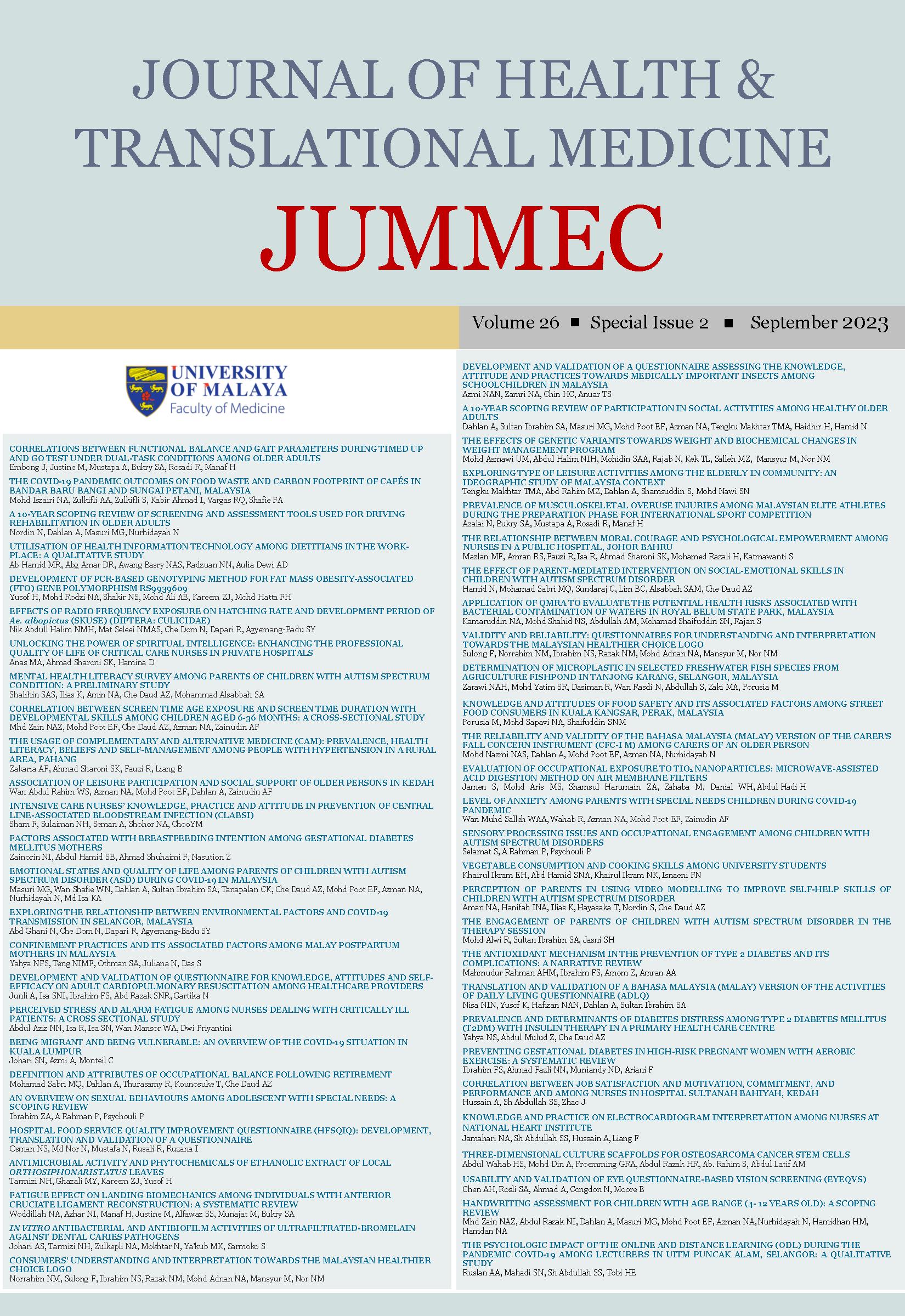FATIGUE EFFECT ON LANDING BIOMECHANICS AMONG INDIVIDUALS WITH ANTERIOR CRUCIATE LIGAMENT RECONSTRUCTION: A SYSTEMATIC REVIEW
Received 2023-07-07; Accepted 2023-09-27; Published 2023-09-27
DOI:
https://doi.org/10.22452/jummec.sp2023no2.24Abstract
It is well established that knee stability can be altered during fatigue, which may increase the risk of anterior cruciate ligament (ACL) injury. This is due to a reduction in neuromuscular control that leads to abnormal movement patterns. This study aims to review the impact of fatigue on landing biomechanics among individuals who have undergone anterior cruciate ligament reconstruction. Four databases (Scopus, EBSCO, Web of Science, and Google Scholar) were searched for relevant articles, with a focus on full-text English-language research articles published between 2012 and 2022. The quality of the included studies was evaluated using the McMaster Critical Review Form for Quantitative Studies, and two independent reviewers were involved in the study evaluation, with a third reviewer resolving any discrepancies. Data on study demographics, fatigue simulation methods, landing tasks,
outcome measures, and results were extracted from included studies. Eight studies met the inclusion criteria and were included in the analysis. The results of these studies showed that fatigue simulation reduced knee flexion only in two studies and increased hip flexion moment only in two studies during landing among individuals with ACLR. These inconclusive results show that fatigue may negatively impact landing biomechanics in people who have had an ACLR, potentially increasing their risk of re-injury. Fatigue did not affect the landing strategies adopted by individuals who have undergone ACLR. Some of these changes, such as reduced knee flexion and reduced hip flexion moment, could potentially increase the risk of re-injury. However, other changes, such as an increased hip flexion angle, may protect the joint from further injury. More research is needed to better understand the impact of fatigue on landing strategies in this population and to identify strategies that can minimize the risk of re-injury.
Downloads
Downloads
Published
Issue
Section
License
All authors agree that the article, if editorially accepted for publication, shall be licensed under the Creative Commons Attribution License 4.0 to allow others to freely access, copy and use research provided the author is correctly attributed, unless otherwise stated. All articles are available online without charge or other barriers to access. However, anyone wishing to reproduce large quantities of an article (250+) should inform the publisher. Any opinion expressed in the articles are those of the authors and do not reflect that of the University of Malaya, 50603 Kuala Lumpur, Malaysia.


